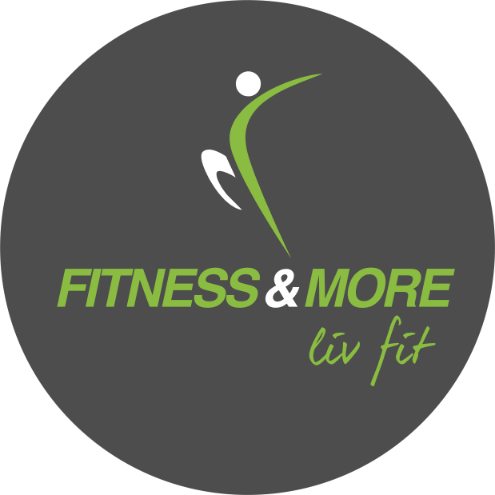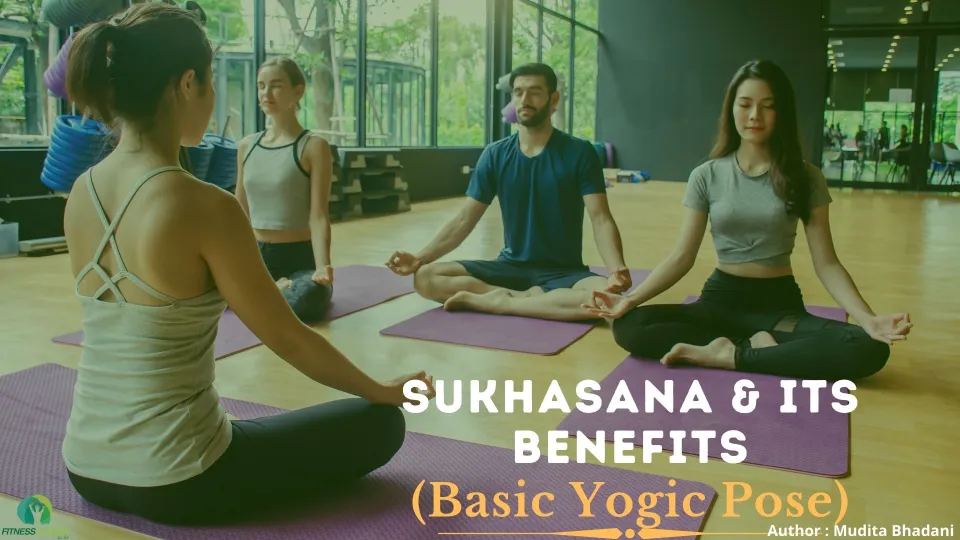“Sthira Sukham Asanam”
Sukhasana or easy pose is one of the most common sitting postures, which people have been using for ages. It is also one of the most basic yogic poses, used for meditation. As the name suggests, it is the simplest asana and can be performed by people of all ages.
Earlier, we used to sit in this posture, not as a Yogic activity but to perform our day to day activities such as eating, sitting, working etc. and due to its day to day use, it was very easy for people to sit in this posture and probably due to this reason it is called an Easy pose.
However, contrary to its name, now a days lot of people find it difficult to even sit in this posture or to
hold this posture for a long time. One of the major reasons is that with western influence, a lot of people have started using chairs and tables, resulting in lean back, tightness around the hip area, and the tension in muscles around the back making it relatively difficult for people to sit on the floor in a cross-legged position.
Why Sukhasana
A beginner can start their yoga practice with Sukhasana as it is comparatively easy to perform than other asanas and helps to strengthen the knee, and spine and improves lower-body flexibility.
Further, it helps to relax the body muscles. Further, a person can relax their body in Sukhasana after doing asanas.
What is Sukhasana?
The word Sukhasana consists of two Sanskrit words, Sukham and Asana. Sukham means easy,
comfortable, bliss and Asana means “posture”. It is a simple cross-legged seated asana used in
meditation. It is performed by placing both feet under opposite knees
This posture is also known as Pose of Happiness.
Benefits of Sukhasana
The beginner posture has a lot of benefits. Some of the major benefits are as follows:
Physical Benefits
- One of the best asanas for beginners, who cannot perform advanced asanas.
- It improves the alignment of the body.
- It strengthens the digestion system of the body and helps to reduce digestive issues such as constipation.
- It helps reduce tightness in the hip joints and simulates the lower part of the body including the thighs and ankles.
- It stretches the ankle and knee joints.
- It helps to lengthen the spine and strengthens the back muscles.
- It broadens the chest and strengthens the respiratory system.
- It relaxes the entire body and helps in removing fatigue.
Mental Benefits
- It acts as a foundation for starting meditative practices for beginners
- Regular practice with a focus on the nose or third eye helps to increase our focus and concentration power
- It relaxes our mind and body and reduces the stress level
- It helps to increase the awareness of body
Preparatory poses
It is a simple asana, however, people who find it difficult to sit in Sukhasana can start with the butterfly pose. It will reduce stiffness in the lower body and help to sit in Sukhasana.
Who should not do Sukhasana?
- People who are suffering from any knee, hip injury or are having back pain or spinal issues should avoid sitting in the pose for a long time.
- Try to keep your spine straight and elongated while performing this asana do not slouch forward or backwards.
- Do not sit in this posture, if you are feeling any discomfort in this pose.
How long can it be done?
Starting practice can be done for 5 minutes and one can later sit in this posture for as long as one wants.
Steps to perform Sukhasana
- Sit on the floor in the Dandasana position with your legs stretched outwards. Bend your right knee and place it under your left thigh.
- Similarly, bend your left knee and place it under your right thigh.
- The spine should be kept straight and erect. Chin should be parallel to the floor and look in front.
- Your body should be in a straight line. The neck should be elongated.
- Shift your weight towards your hips instead of your legs. Try to keep your knees down toward the floor
- Put both the palms on the knee in Gyan Mudra (thumb touching the tip of the index finger and other fingers straight facing up).
- Inhale and exhale slowly in the same position to relax the body. Keep your eyes closed and try to focus on your nose or in the middle of your eyebrows.
How to start for beginners
- The beginners, who are not able to sit comfortably in this position, may keep a blanket or bolster under their hips.
- In case you are slouching backwards or forward while sitting in this position, try sitting against the wall, if it still does not work try putting a pillow or bolster towards the back.
- In case you are not able to concentrate during this position or feel sleepy, try focusing on the inhalation and exhalation and their impact on the chest, stomach and spine. For starting you can try with your eyes open and concentrating on a single point.
Some basic asanas to be performed in Sukhasana
- Neck movements: A person can move their neck up and down or on the right side and left side while resting in this position. It can also side stretch the neck. It promotes neck flexibility and also helps to release tension in the back and shoulders.
- Hand and Shoulder Rolls– Extend hands on both sides sidewise and then rotate hands in a circular motion clockwise and anti-clockwise while sitting. Further, shoulder rotations can be done while sitting.
- Side bending: Bending on the left and right side with the support of the hand. In this posture, slide your right hand towards the right side and then bend sidewards from the right side and place your other hand straight above the ear and hold for some time. Try the same posture from another side.
- Forward Bend: Bend forward with both arms on the floor and try to touch your nose towards the floor.
- Simple twist pose: Place your right hand on your left knee and put your left hand on the floor and try to slide your hand backwards and twist your body. Try to look back. It strengthens shoulder and back muscles.
The poses mentioned above can be performed at the start of practice to warm up the body. These
poses stretch and strengthen the shoulder, hand, neck and back muscles. It also aids in relieving pains in the body.
Sukhasana and Meditation
While Padmasana and Siddhasana are said to be the best poses for meditation, these are advanced
poses and cannot be performed by each and every person. On the other hand, every person can sit in Sukhasana and can do Meditation.
A beginner can start the practice by sitting comfortably in Sukhasana and closing the eyes and concentrating on the inhale and exhale of breath. He should remain aware during his practice and try to focus on the flow of breathing and its impact on the chest, stomach and spine. For starting, it can be done for 5 minutes and later practice can be increased gradually
My experience with Sukhasana
As a beginner, when I started doing Sukhasana, my practice was divided into 2 parts. One for doing basic neck, hand movements and side and forward bending and the other part which my teacher insisted on was Pranayama and Meditation. It was easy to sit in Sukhasana while doing asanas.
The part wherein I struggled most was sitting in pranayama:
a. One challenge I faced was keeping my back straight and neck elongated while doing pranayama: For that, I started putting a pillow behind my back, so that my spine remain straight and elongated.
b. Another challenge I faced was sitting in Sukhasana for a long time as the feet used to feel numb and used to feel pain in the hips after some time: Sitting on a pillow or blanket resolved the feeling of pain in the hips. Further, do not put too much pressure on your feet to stop blood circulation and keep your knees wide.
However, with time, I was able to overcome the challenges. My practice got increased from 5-to 10 minutes in the beginning to half an hour. Further, doing asanas and pranayama in Sukhasana brought a sense of stability to my daily practice. It also helped me to be aware and remain more focused during my practice and after my practice and made me feel energetic the entire day. Further, it induced a sense of calmness in me for the entire day.
Caution
While Sukhasana is a very easy pose and provides a lot of benefits but if you have any knee, hips or back injury or pains, it is advisable to avoid it or to do it after consulting with a yoga trainer. Further, in case you are feeling pains while or after doing this pose, do consult your Yoga trainer before continuing the practice.
Trainers at Fitness and More helped me a lot in performing and practising Asanas, and I’m very grateful for Avani who’s running such a fantastic Fitness and Boutique Studio in the middle of Gurgaon.
Do remember that everybody is different and the impact of asanas on everybody is different.
HAPPY DOING YOGA!!


The article is very inspiring. The way author described everything related to asana is commendable. Thank you for encouraging us and keep writing…
thank you so much 🙂 , you can also visit our Blog and brainstorm with our other wonderful writings
Great info with detailed explanation
Thank you 😊
Great Info, Thank you
Thank you 😊
Very nicely explained.
Thanks 😊 for giving your valuable time, and putting your thoughts 💬,
You may visit our Blog to see our other writings
This is a wonderful Article! For people beginning their Yoga routine practices can benefit a lot!
Thank you ☺️ for giving your time, and reading the article, you can go with more from our Blog
Nicely worded article…will surely guide people who have started practicing yoga🙂
thanks Prerna for encouragement, visit our Blog for the same
Very informative and detailed information. The tips are surely going to help people who’ve recently started yoga.
Thanks for the wonderful article.
thank you 😊